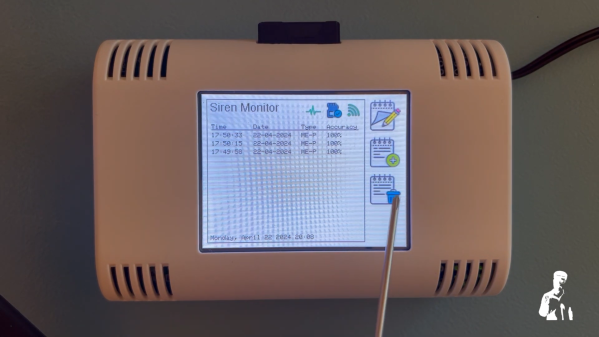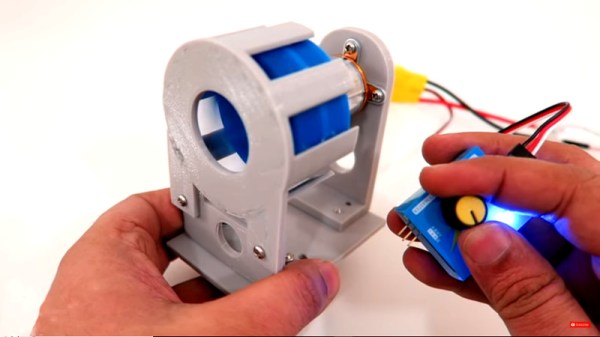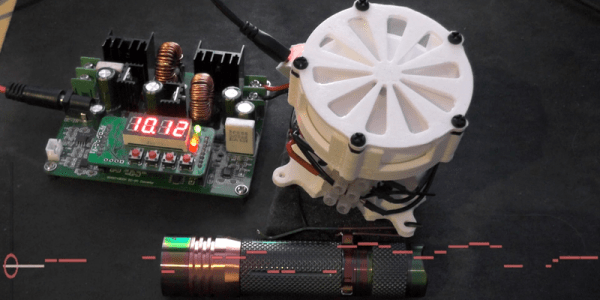Air raid sirens have an important job to do, and have been a critical piece of public safety infrastructure in times of geopolitical turmoil. They sound quite unlike anything else, by virtue of their mechanical method of generating an extremely loud sound output. They’re actually remarkably simple to build yourself, as [MarkMakies] demonstrates.
[Mark’s] build relies almost entirely on 3D printed components and ex-RC gear. The sound itself is generated by a rotor which spins inside a stator. Each is designed with special slots, such that as the rotor turns at speed, it creates spikes of air pressure that generate a loud wail. The rotor and stator are fitted inside a housing with a horn for output, which helps direct and amplify the sound further.
To spin the rotor, [Mark] used a powerful brushless motor controlled by a common hobby speed controller. The actual speed is determined by a potentiometer, which generates pulses to command the speed controller via a simple 555 circuit. By ramping the speed of the motor up and down, it’s possible to vary the pitch of the siren as is often done with real air raid sirens. This action could be entirely automated if so desired.
If you do decide to build such a siren, just be wary about how you use it. There’s no need to go around agitating the townsfolk absent an actual air raid. It’s worth noting that sirens of this type aren’t just used for air raids, either. They’re often used for tornado warnings, too, such as in Dallas, for example. But why not for music?
Continue reading “3D Printed Air Raid Siren Sounds Just Like The Real Thing”

















